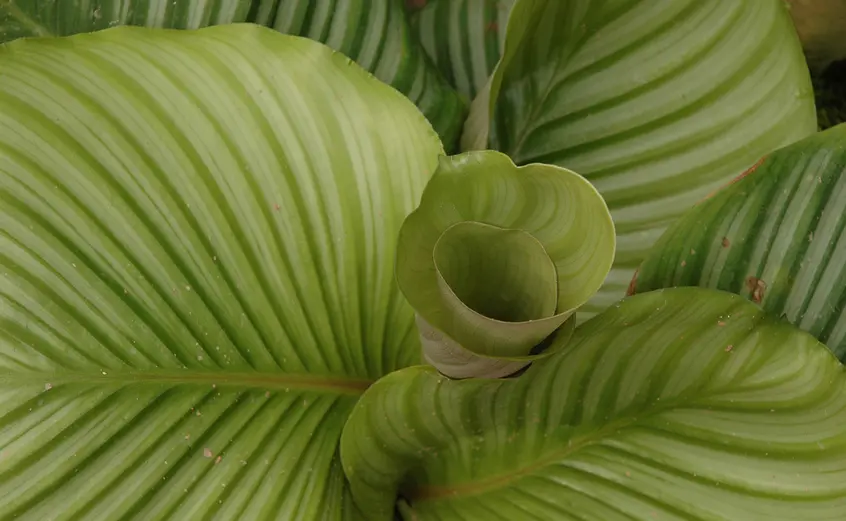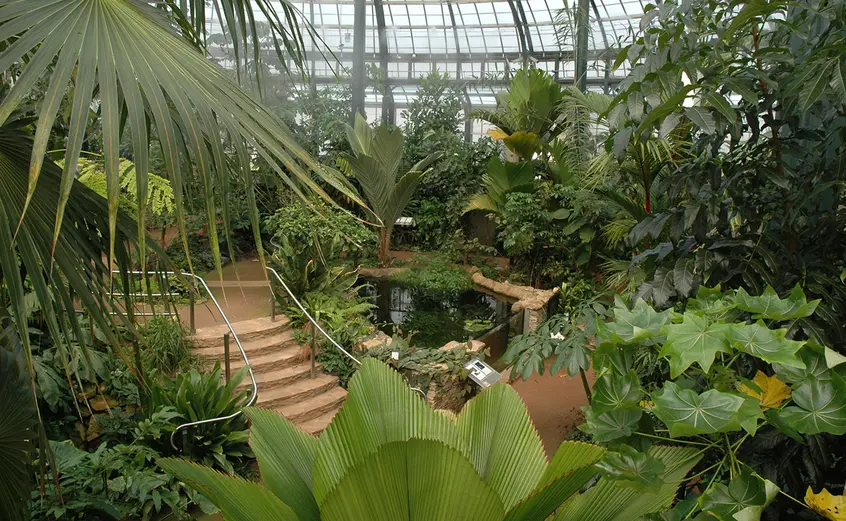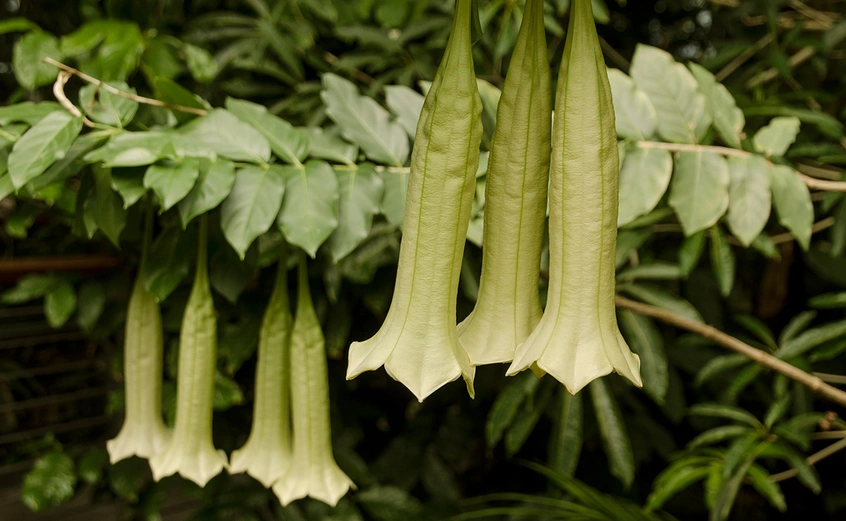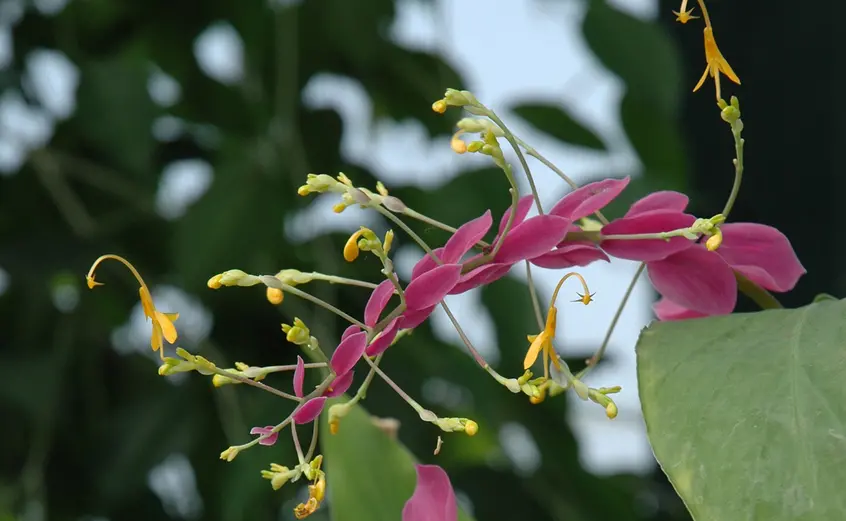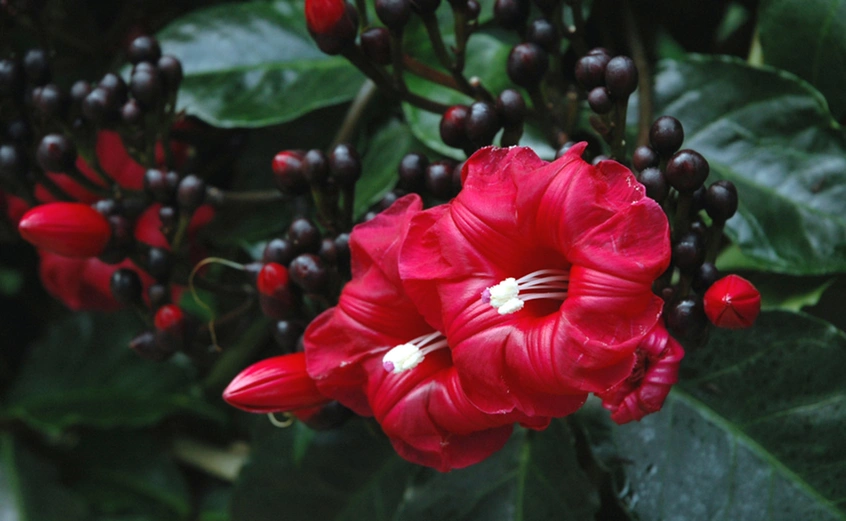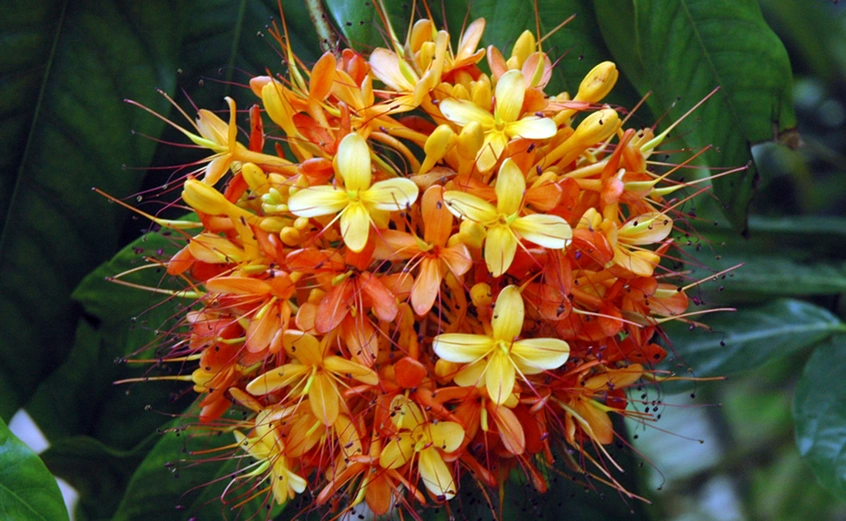
Conservatory
Rain Forest
This warm, wet tropical environment contains rare and unusual palms, the Amorphophallus titanum (The Huntington’s infamous “Corpse Flower,” that blooms on rare occasions), and a pond. Using technology from the Jet Propulsion Laboratory, visitors can move a climate sensor pod up and down in the overhead canopy of trees, comparing light levels, humidity, and temperature in different layers of the forest. Another exhibit, “Rain Forest Spices” encourages visitors to smell popular spices from the rain forest (such as vanilla), and match them with the plants they come from (an orchid).
Cloud Forest
Cool, misty mountaintops in the tropics are often home to cloud forests. This habitat includes trees draped in orchids, ferns, and bromeliads, as well as unusual and beautiful tropical pitcher plants. Many of the plants found in cloud forests live with their roots in the air. Called epiphytes, they get water right from the clouds, and can grow on trees, rocks, and even power lines.
Carnivorous Plant Bog
This habitat displays some of The Huntington's most unusual American plants: carnivorous Venus flytraps, American pitcher plants, sundews, butterworts and sphagnum moss from the coastal bogs of the Carolinas, Georgia, and Florida. In the wetlands of the Bog Gallery visitors can use magnifying lenses to see insects caught by the carnivorous plants. The California Pitcher Plant, native to Northern California and Oregon, is in special display with the constant cold running water it needs.
Plant Lab
The Plant Lab offers an entertaining, hands-on introduction to botany, including a plant petting zoo. Exhibits are organized into six different groups: roots, stems, leaves, flowers, seeds, and spores. Visitors can design a leaf quilt using a variety of leaves and learn how to use scientific instruments including a refractometer, which measures the percentage of sugar in different nectars.
Corpse Flower (Amorphophallus titanum)
The Titan Arum, Amorphophallus titanum, has been called the world’s largest flower, with a bloom that can grow to more than eight feet in height and four feet in diameter. It is a rare tropical plant native to the equatorial rainforests of Sumatra, Indonesia. When in flower, it exudes a foul stench that smells like rotting meat. Currently we maintain several dozen plants of Amorphophallus titanum in greenhouses and planted in the Conservatory. Learn More
Take a Virtual Tour of the Conservatory
Visit the Rose Hills Foundation Conservatory for Botanical Science interactive website and take a virtual tour of the Conservatory, plant flowers in the digital garden, explore the plant database, discover fun plant activities to try at home, and much more!
About the Environment
The Conservatory is composed of glass and steel, with a large central rotunda and two symmetrical wings. The wings have a maximum interior height of 26 feet, and the rotunda is 96 feet across with a maximum interior height of 43 feet. The climate conditions in the Conservatory range from 65°F to 90°F, with relative humidity ranging from 50 percent to 95 percent.
Architect: Offenhauser Associates Inc.
Landscape Architect: Deneen Powell Atelier
Exhibit designers: Gordon Chun Design
